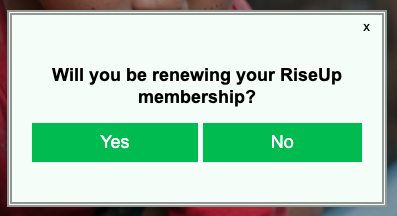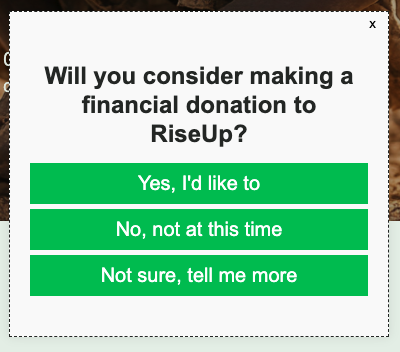Website Engagement Design Best Practices
Web Engagement campaigns in PropFuel can be one of the most powerful ways to encourage interaction and collect feedback from your audience, and your campaign’s visual design and messaging can strongly influence response rates.
This guide will walk you through best practices for designing compelling and effective Web Engagement campaigns in PropFuel.
1. Keep It Clean and Minimalistic
Limit Text: Use clear, concise, and action-oriented language to drive engagement. Aim for one impactful sentence followed by a direct question that guides the next step.
Consistent Branding: Use your association’s colors and style to maintain a cohesive experience.
2. Choose Colors Strategically
Contrast for Readability: Ensure text stands out against the background for easy reading.
Attention-Grabbing Accents: Use bold colors for buttons, but keep the overall palette cohesive with your brand.
Neutral background: transparent, white, or grey backgrounds ensure pop-ups blend seamlessly with the website design, making them less intrusive while keeping the focus on the message and call-to-action.
3. Optimize for Action
Clear, compelling questions: Provide clear, direct answer options so the respondent knows exactly what to expect and how to respond.
Button Best Practices:
Use rounded buttons for a modern feel.
Ensure the font size is large enough for easy clicking.
Use a distinct color for the Button Hover Background for a smoother interaction.
4. Design for Responsiveness
Test Across Browsers: Preview how pop-ups, banners, and in-line content display on different browsers, such as Google and Safari.
5. Placement Matters
PropFuel offers three types of layouts to choose from: (1) Popup, (2) Banner, and (3) Inline. See more about Website Engagement Campaign Layouts or read on for what to use for your specific use case:
Top pop-ups work well for important announcements, such as AMS blackout dates or conference registration deadlines.
Bottom pop-ups are less intrusive but effective for engagement. For example, a question about what brought them to the website.
In-line content should flow naturally within your site’s content. An example of in-line content is a renewal question to members who haven’t renewed but who visit the login page.
By following these best practices, you can create sleek, modern, and highly effective Website Engagement pop-ups, in-line content, and banners that not only look great but also drive meaningful actions from your members.



